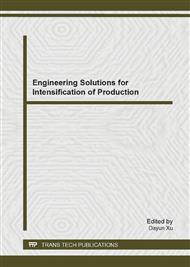p.213
p.219
p.225
p.231
p.239
p.245
p.250
p.254
p.258
Model Simplification of Hoses in a Hydraulic Lifting System
Abstract:
Rubber hose is normally adopted in the connection between the lifting cylinders and the control valves. Low bulk modulus of hose reduces the natural frequency of hydraulic system and brings difficulties to the controller design. This paper focuses on the model simplification of hoses in the hydraulic system. First, a hydraulic lifting system is presented in the paper. Then, simulation model of the lifting system is built in AMESim, and the simplified model of hose is conducted using an improved lumped parameter method. Finally, comparative simulations with the proposed model and the original model provided in the software are carried out. Results show that the simplified model can be used to replace the original model in the simulation of hydraulic systems.
Info:
Periodical:
Pages:
239-244
Citation:
Online since:
February 2014
Authors:
Price:
Сopyright:
© 2014 Trans Tech Publications Ltd. All Rights Reserved
Share:
Citation:


